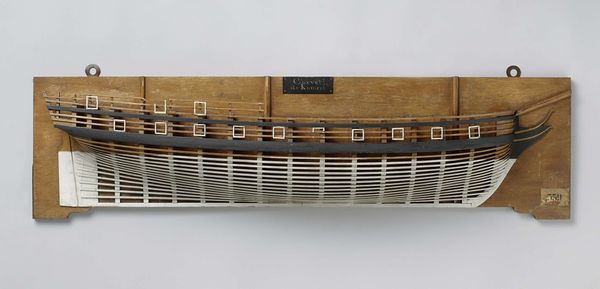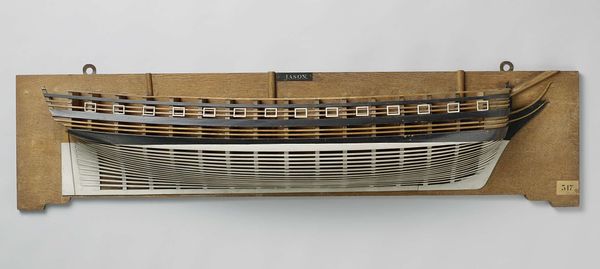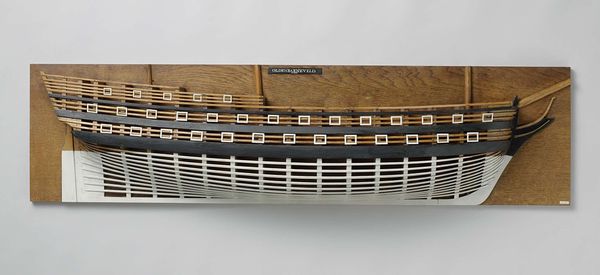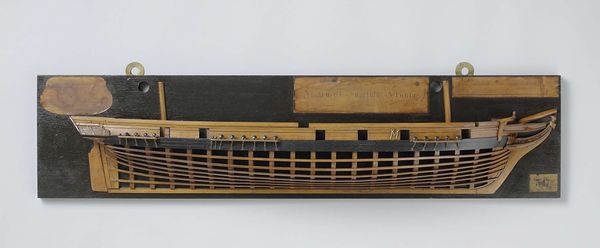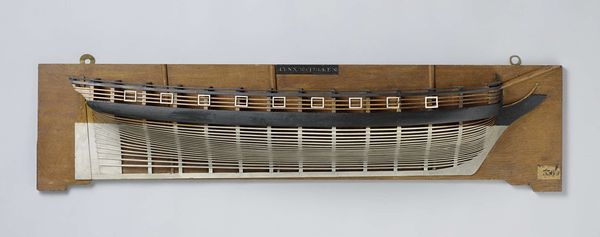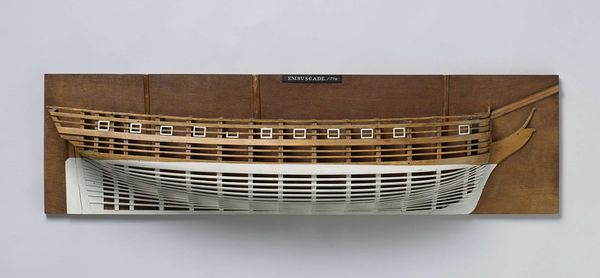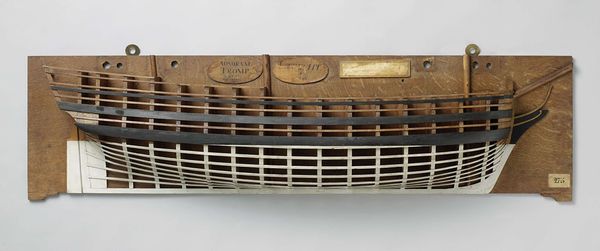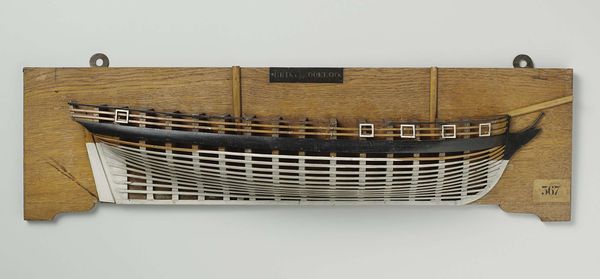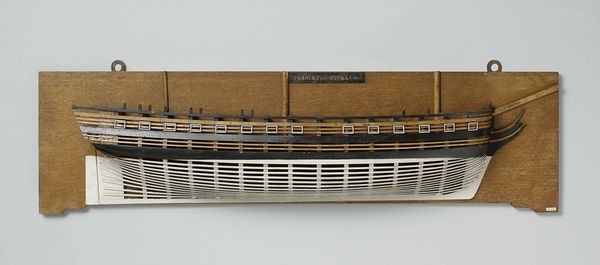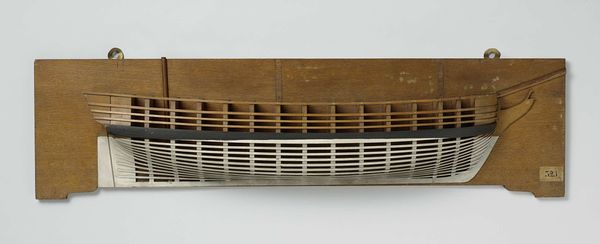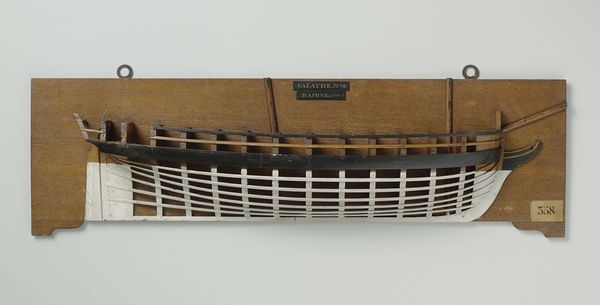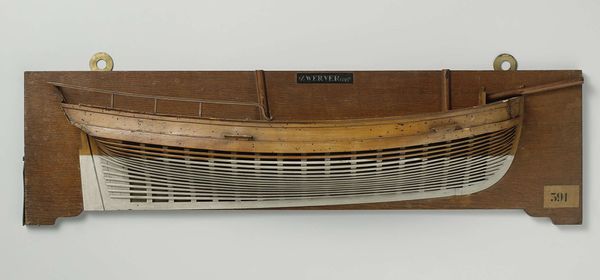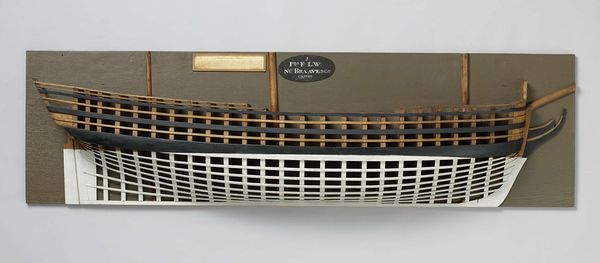
Dimensions: height 32.8 cm, width 108.4 cm, depth 14 cm
Copyright: Rijks Museum: Open Domain
Curator: The “Half Model of a Merchant Frigate,” dating back to 1826, is a remarkable piece crafted in wood by H.W. van Hoboken. The elegance is striking at first glance, wouldn't you agree? Editor: Yes, quite minimalist in its rendering. You can see the lines where the ship’s hull would be, how each wooden part comes together… the labour that went into envisioning this structure and then building it to this detailed half-scale. Curator: Indeed, it is far more than just aesthetically interesting; its historical and social contexts deserve our attention. Maritime trade has dramatically influenced gender and race, through imperial expansion and enslaved peoples being transported. What were the human costs involved in building the full-size model from which this one derives? Editor: That's important. This frigate also acts as a type of archive—how was the wood sourced, who crafted it, what shipbuilding knowledge went into constructing that hull, considering trade routes, what would the environmental costs have been. Curator: Thinking about these structures critically highlights many complex historical and contemporary social themes around work, mobility, and class, from when this half-model was made right up to current debates around global economics. Editor: I appreciate how it renders transparent labour. I wonder whether the maker questioned traditional divides between high art and craft and intended this half-model as a subtle protest against hierarchical labour practices? Curator: It makes you consider the politics embedded within the processes of seafaring, reminding us that even something as apparently inert as a ship carries a heavy burden of historical significance and current resonance. Editor: Absolutely, seeing all those ribs exposed invites one to examine the system—the bones of the boat are all laid bare here! Curator: To understand this beautiful and haunting object fully, we have to be sensitive to how the material processes interact and are shaped by wider cultural systems, past and present. Editor: It's really got me considering my understanding of maritime history. Curator: As an artwork, the model serves to remind us that trade is always rooted in an intricate web of human stories. Editor: Thanks, I’ll remember to consider production methods whenever I see nautical art now.
Comments
No comments
Be the first to comment and join the conversation on the ultimate creative platform.
